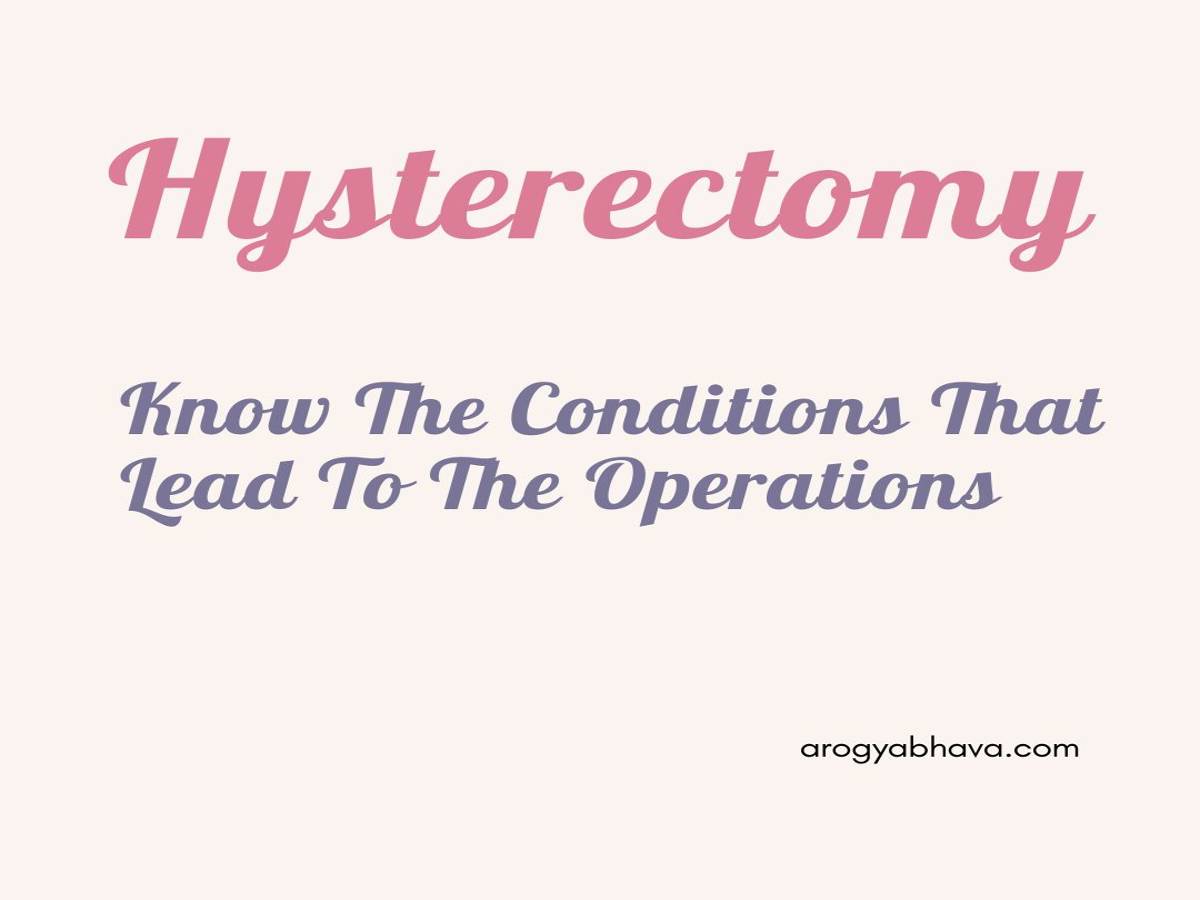Hysterectomy: Conditions That Lead To The Operations

Hysterectomy: A hysterectomy (also known as uterus removal) is an operation to remove the uterus (womb). Most hysterectomies are not emergency operations, so you have time to think about your options. The uterus cradles and nourishes a fetus from conception to birth, and aids in the delivery of the baby. It also produces the monthly menstrual flow or period. The ovaries have two major functions. One is the production of eggs or ova, which permit childbearing. The second is the production of hormones or chemicals that regulate menstruation and other aspects of health and well-being, including sexual well-being. If the egg that is released during a woman’s normal monthly cycle is not fertilized, the lining of the uterus is shed by bleeding (menstruation). After a hysterectomy, a woman can no longer have children, and menstruation stops. The ovaries generally continue to produce hormones, although in some cases they may have reduced activity. Some hysterectomies also include the removal of the ovaries, so the supply of essential female hormones is greatly reduced. This can have various effects. These are general facts related to hysterectomy.
Whether or not to have a hysterectomy
Hysterectomy is one treatment for a number of diseases and conditions. If you have cancer of the uterus or ovaries or haemorrhage (uncontrollable bleeding) of the uterus, this operation may save your life. In most other cases, a hysterectomy is an elective procedure. The operation is done to improve the quality of life: to relieve pain, heavy bleeding, or other chronic conditions and discomfort. There may be other ways of treating or dealing with these problems. Together with your doctor, you should weigh all the alternatives and effects of the different choices to help you decide what is right for you.
Cancer of the uterus
Cancerous organs and, in some cases, adjoining organs and structures, are removed in order to stop the spread of this life-threatening disease.
Fibroids
These are common non-cancerous (benign) tumours of the uterus and they are the most frequent reason for recommending a hysterectomy. They grow from the muscular wall of the uterus and are made up of muscle and fibrous tissue. Many women over 35 have fibroids but usually have no symptoms. In some women, however, fibroids (myomas) may cause heavy bleeding, pelvic discomfort and pain, and occasionally pressure on other organs. These symptoms may require treatment, but not always a hysterectomy. Some women choose to do nothing since fibroids will often shrink in size as a woman goes through menopause.
Endometriosis
Another common reason for recommending a hysterectomy is endometriosis. This is a noncancerous condition in which cells from the uterine lining grow like islands outside of the uterus. This growth occurs most commonly on the ovaries, fallopian tubes, bladder, bowel, and other pelvic structures, including the uterine wall. These cells may cause pain and discomfort by bleeding at the time of menstruation. Endometriosis may also cause scarring, adhesions, and infertility. Symptoms can vary greatly and some women choose to do nothing or find that drug therapy, pain relief medication, or more localized surgery are effective. When these are not effective, a hysterectomy may be the treatment of choice.
Cancer of the cervix
Precancerous changes in the cervix are often found on routine Pap smears. These lesions or abnormalities must be treated, but rarely with a hysterectomy. When detected early and treated effectively, most of these conditions do not progress to invasive, life-threatening cancer. It is only in the case of invasive cancer of the cervix that a hysterectomy may be the treatment of choice.
Unusually heavy bleeding
It is normal for the amount and length of menstrual flow to vary from woman to woman. There may also be differences in menstrual flow from one cycle to the next. If bleeding that is unusually heavy or frequent for you occurs, this may be due to a variety of causes. The most common causes are fibroids and hormonal changes. Because there can be many reasons for unusually heavy bleeding, getting an accurate diagnosis is vital before deciding on a course of treatment. Depending on the diagnosis, drug therapy or minor surgery may be indicated. Rarely, there can be a haemorrhage of the uterus in which case a hysterectomy can be life-saving. We will discuss the benefits and risks involved in undergoing a hysterectomy in our next article on this subject.
Also Read: Yoga For Women: Yoga Asanas Concept, Effects, and Rules
A lot of research and compilation of facts are put together in this article for our readers’ benefit so that Arogyabhava fulfils its promise of health and wellness information accessible, understandable, and actionable so that readers can make the best possible decisions about their health